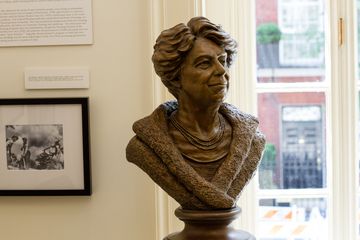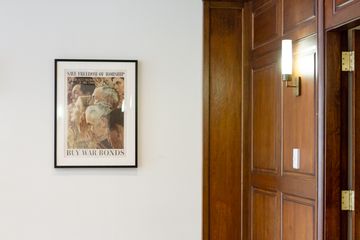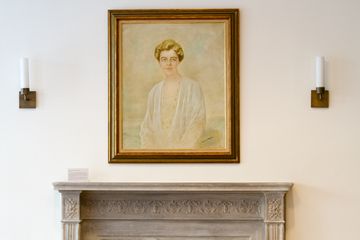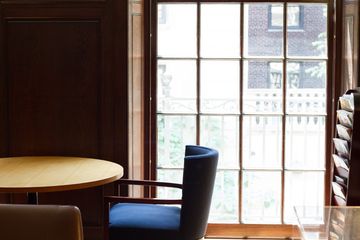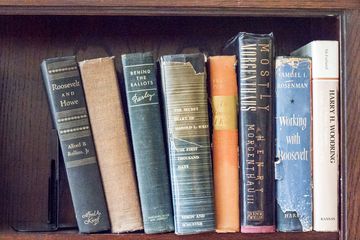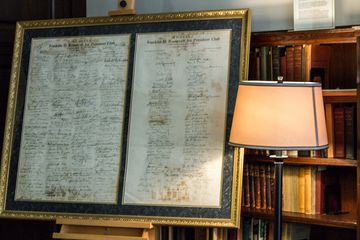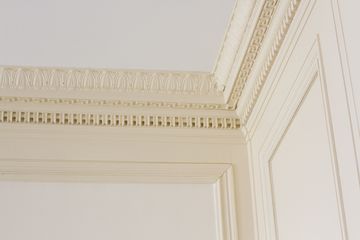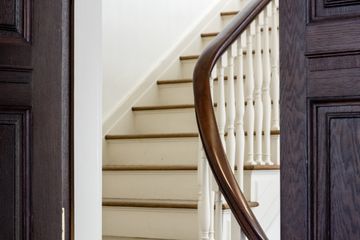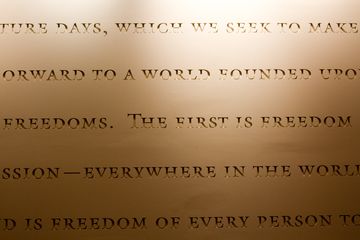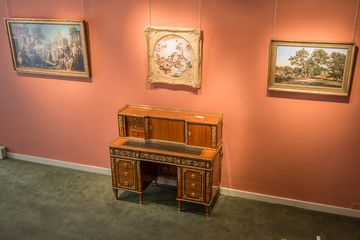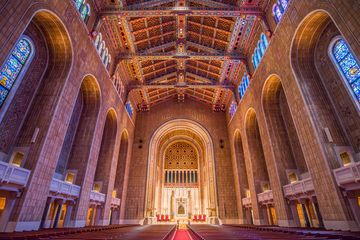
The Roosevelt House is primarily an educational institution, housing two of Hunter College's undergraduate programs and hosting a number of book talks, panels, and other public events. But, as the name reveals, it began as a family home. The Roosevelt's moved into this double townhouse in 1908, with matriarch Sara Roosevelt living on one side, and Franklin and Eleanor on the other, along with their five children. On my visit to the Roosevelt House, I participated in a guided tour that illuminated some of its history for me.
The building itself, was designed by architect Charles Platt, who also made the plans for the nearby mansion that was home to The China Institute for almost seventy years. This elegant townhouse among the rows of brownstones would set the tone for many of the other structures in the area to be renovated or replaced.
Deborah, the tour guide, took us through the many rooms and their pasts. I was surprised to learn that the house was built with two elevators, one on each side, a rare architectural choice for the early twentieth century. The elevators became especially important after 1921, when Franklin Delano Roosevelt fell ill with polio and was confined to a wheelchair. One of the elevators has been retained in its original state, and is shockingly small – the wheelchairs we use today would never fit - but Roosevelt's had a profile similar to that of a dining chair, and so was able to wheel in and out without difficulty. The second elevator has been expanded to allow full accessibility to Hunter College.
Upstairs, the library functions as a little museum, containing a selection of books on the Roosevelt's, along with some historic artifacts. The real history though, is in the building itself. "A lot came out of this house," Deborah explained. President Roosevelt appointed his initial cabinet members in the upstairs library, and among them, the first woman. That same library is where President Roosevelt practiced tirelessly on crutches until he could stand and move sans a wheelchair during political gatherings. A few steps away, the drawing room was the site of Roosevelt's first radio address as president. One floor up is the bedroom where he recovered from polio, and where he often held meetings so that he could continue working minus the discomfort of his leg braces. I found myself lingering close to the walls, hoping they might whisper some of the things they overheard all those years ago.
In 1941, Sara Roosevelt died, and the family put the townhouse up for sale. It was a difficult time to sell a house – everybody was at war except the United States, and the whole country knew that conflict was in the immediate future. The Roosevelt's still managed to find a buyer. Eleanor had a strong relationship with Hunter College, and so when they expressed interest, the family lowered the price, making it possible for Hunter to acquire this historic home in 1943. It was dedicated as the Sara Delano Roosevelt Memorial House.
Today, the Roosevelt House works to balance its legacy and contemporary function. The house retains all its original crown molding, but the furniture is new, allowing Hunter students and visitors to sit comfortably and not worry about causing damage to antique sofas or rugs. Students at the Roosevelt House study Public Policy and Human Rights, a fitting tribute to the Roosevelt family's influence on this country.




